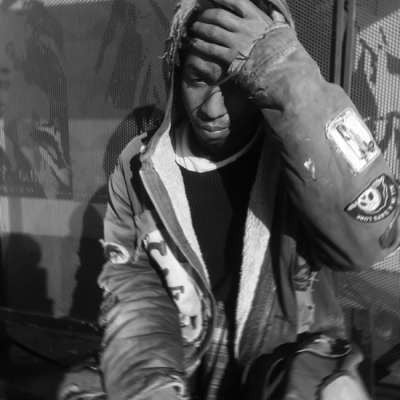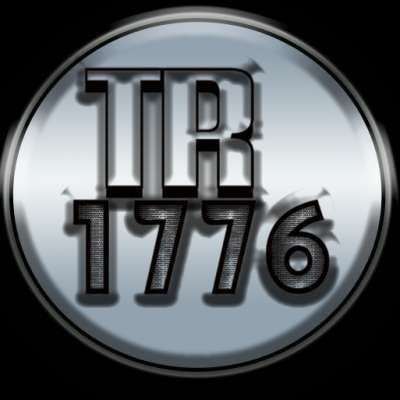#AlexJonesShow HR3: God is on our side, and humanity is awakening to the globalists' post-human plan
The world’s elites are pushing world population reduction so they can hoard all the world’s wealth and resources. Tune in below to find out how to avoid their traps -- 05
Share across all globalist controlled platforms. Do not keep them on safe platforms because most people on those platforms are already awoke to the lies of the New World Order agenda! If you do not share this becomes an echo chamber.
💲 SUPPORT/DONATIONS 💲
Fighting to keep all truth on banned platforms like Youtube/Twitter/Periscope etc. If you want to continue see truth on these banned platforms please consider subscribing so you can help fight the good fight.
• If you can. please donate to:
• Cash App - http://bit.ly/2Q0rXcq
• Bitcoin - 1DDZeUG2As6t9V8b9JLJDLefddJffiJbKW
• PayPal - http://bit.ly/2sdO5Hc
◄◄ Subscribe to my Subscribestar account if you can do a monthly donation! ►►
• Subscribestar: - http://bit.ly/35YelE5
📹 Full and Hourly Segments Shows (Commercial Free) 📹
• YT: https://youtube.com/channel/UC....uYA1yUXcKYmIysZHQRO9
• Brighteon: https://www.brighteon.com/channel/americanpatriot
• Bitchute: https://www.bitchute.com/chann....el/theresistance1776
• Brand New Tube: https://brandnewtube.com/@TheResistance1776
• UGEtube: https://videos.utahgunexchange.....com/@TheResistance1
• Rumble: https://rumble.com/c/c-368835
📡◄ Follow Me ►📡
• Brighteon.Social: https://brighteon.social/@TheResistance1776
• CloutHub: https://app.clouthub.com/priva....te/da911c25-3268-4d6 (@TheResistance1776)
• Gab: https://gab.com/The-Resistance-1776
• Twitter: https://twitter.com/TR76News
• Telegram: https://t.me/TR76News
• Discord: https://discord.gg/a8UYk8r
• Facebook: https://www.facebook.com/TR76NewsIII
• Parler: https://parler.com/profile/TheResistance1776
FAIR USE NOTICE This video may contain copyrighted material; the use of which has not been specifically authorized by the copyright owner. We are making such material available for the purposes of criticism, comment, review and news reporting which constitute the fair use of any such copyrighted material as provided for in section 107 of the US Copyright Law. Not withstanding the provisions of sections 106 and 106A, the fair use of a copyrighted work for purposes such as criticism, comment, review and news reporting is not an infringement of copyright.

The Demonization of Pan.
Kevin Hearne (c) 1998
Midas, no longer lured by dreams of riches,
Took to the woods, became a nature-lover;
He worshipped Pan... (Ovid 303).
A. B�cklin 1827-1901Such a mention of the ancient Greek god, Pan, hardly seems threatening. It certainly does not suggest that Pan was evil incarnate�yet by approximately 300 C.E., the demonization of Pan had begun, and it continued until the western world largely associated images of Pan with the devil. To the Greeks, Pan was a shepherd: he was half goat and half man, a thing of nature�certainly not the Antichrist or a being who was out to corrupt and steal men's souls. He was lusty; he played pipes and was therefore musical; and he was a god of nature. And though much is made in schools and textbooks of the major Olympian gods�Zeus and the gang�it is clear from archaeological evidence that Pan was the favorite god of the Greek people. "It's a fact that there are more dedications to him than to any other..." (Pitt-Kethley xi). Perhaps this is what led Christian theologians to demonize Pan; they sensed a powerful competitor for the hearts of the people. This demonization was no accident, but rather a deliberate twisting of pagan ideals as Christianity spread its influence throughout Europe. After the Council of Nicea issued the Nicene Creed and the Roman Catholic Church was established in 325 C.E., Christian theologians (beginning with Eusebius) transformed Pan from a benign nature god to Satan�the great Adversary.
There is some evidence to the contrary�that in fact, Pan went the other way, and was associated with Jesus Christ. The connection may not be apparent at first: how can a "minor" god of the sizable Greek pantheon have anything to do with the central figure of a monotheistic, eschatological religion? The mere suggestion of this would get someone burned at the stake during the Spanish Inquisition. But the similarities are there. For example, they were both shepherds, after a fashion. Also, neither of them were entirely divine: Jesus was supposed to be one hundred percent divine and one hundred percent human simultaneously, and Pan was likewise a god and "also an earthly being, by virtue of his mother Dryope, his occupation, and his association with man. This fusion of the human and divine in one creature has led many later Christian poets�most notably Milton�to describe Pan as a pagan prefiguration of Jesus Christ" (Baker 11). The crucial point here, however, is that such comparisons were made by poets�and mostly poets who lived after the Reformation�not by priests or bishops of the Church and certainly not by any of the popes.
A. B�cklin 1827-1901The obvious problem with comparing Pan to Jesus, in the Church's view, would be Pan's incredible virility. Jesus was never portrayed as a sexual being, and to this day people still feel traces of guilt about sex, as if it were an unholy act. Pan was unabashedly libidinous. A survey of statuary and bas-relief sculpture conducted by Fiona Pitt-Kethley left no doubt of this. In almost every instance she recorded, Pan's manhood was fully aroused, "though never Priapically endowed" (xiii). With depictions such as these, Pan's image was obviously as far away from that of Jesus as another deity could get. No member of the clergy would ever dare to draw comparisons between them when the contrast was so evident, so the poets were alone in raising Pan to a Christ figure.
But what is it about sexuality that makes Christianity so afraid of it, besides the fact that Jesus didn't seem to have any? One scholar believes that since Pan was "a phallic deity like his father [Hermes], he represented sexual desire, which can be both creative and destructive" (Russell 126). The Church still preaches loudly about the destructive power of sexual immorality, and pretty much leaves the creative aspect of it for granted. Since Pan's sexual nature was so evident, this might explain the Church's readiness to hold up Pan as an example of profound moral turpitude. "Sexual passion, which suspends reason and easily leads to excess, was alien...to the asceticism of the Christians; a god of sexuality could easily be assimilated to the principle of evil" (Russell 126). Pan's sexuality, when combined with his unwholesome visage, thus gave the ascetics exactly what they needed. Since he had never been attractive to begin with, and Christians were wont to associate ugliness with evil (deformations and plagues of all kinds were seen as a punishment from God for sins committed), Pan became the image of the devil. Pan's entire physique was so gruesome to behold that the Church could almost point to Pan and say, "This is what happens to the sexually immoral."
Pan wasn't the only pagan god getting his name besmirched at first. Believing in only one God and forsaking all others, Christians had a tendency to equate all pagan deities with demons. Eusebius, writing in the early fourth century, was the first to take aim specifically at Pan. In responding to Plutarch's account of Pan's "death" during the reign of Tiberius (who reigned during the time of Jesus' crucifixion), Eusebius interpreted the story as evidence that God had rid humankind of its biggest demon. "As the pagan deities were demons, in the Christian view, Eusebius'�equating Pan with the daemon, seems natural and unforced" (Merivale 13). By the time of Eusebius, it might well have been natural to make such an equation; but according to A History of the Devil, such slander would have been impossible without the emergence of the Septuagint and the concept of a devil, period:
The concept of the Devil was also aided by the development of the concept of evil demons. At first, demons are morally ambivalent like the gods. Then two groups of demons are distinguished, one good and the other evil. Finally, a shift in vocabulary occurs. In the Septuagint, the good spirits are called angels and the evil spirits demons�wholly evil spiritual beings. These are now easily amalgamated with the Devil, either lending their traits to him, or being spirits subordinate to him (Russell 170).
It is not difficult to see here how Pan's rampant sexuality�so sinful to Christians�made him an ideal candidate for demonization. This defamation of a once pastoral god was part of a vast campaign of religious propaganda designed to put the fear of the devil (where the fear of God didn't seem to work) in the people's hearts�for Christianity had several pantheons of old gods to conquer, and a personification of evil was efficacious in helping the process along. Thanks to Christianity, Pan literally became the world's biggest scapegoat.
The conversion of pagan Europe to Christianity took up most of the first millennium; history shows that pagan converts had problems assimilating the ideas that violence and sensual pleasure were sinful. The former is certainly obvious in the evangelical methodology of Olaf Trygvesson, king of Norway in 999 CE: "All Norway will be Christian or die" (Reston 30), he said. However, the forcible conversion of the populace was being mirrored elsewhere at the same time, and the old cycle of violence (burn, rape, and pillage one's way to the throne) that had ruled since ancient times was curtailed enough so that civilization could begin. "The last apocalypse was a process rather than a cataclysm. It had the suddenness of forty years. Limited to Europe, its drama lay in the deliverance from terror rather than terror itself" (Renton 277). But while Christianity might have been mildly effective in blunting Europe's taste for violence, it is clear that it had (and still has) difficulty blunting human sexuality. With Pan and the other pagan gods, sexuality had always been something to be enjoyed�and people took great delight in imitating the gods. Trying to quell one's desires and imitate the celibacy of Jesus was therefore a bit too much to ask�even simply confining sexuality to marriage was (and is) a problem. No one felt this more keenly, apparently, than St. Augustine of Hippo, who rails at length in his Confessions about the perils of sexuality. He was the first to demonize Pan specifically for his sexuality (approximately 400 C.E.), going beyond the general Christian tendency to equate pagan deities with demons on general principle. "Saint Augustine�first mentioned the existence of incubi, which he thought to be forest deities; Augustine had spun both them and the succubi out of such Hellenic holdovers as Pan and his Dryads as well as other nymphs" (Massadie 275). Augustine's ideas were brought to America by the Puritans centuries later; they thought that the devil, horned and goat-footed, actually lived in the forest around Plymouth. Of course, the myth of his deviltry was widely spread and emphasized throughout the Middle Ages. The Church did propagate the image of Pan as the devil to give an ugly face to all of Satan's temptations, but they were primarily concerned with snuffing out the libidinous nature of the populace�else why not choose an even uglier creature to symbolize ultimate evil? "The devil was everywhere, carved on cathedral doors and pulpit pediments, always with the same Pan-like body...an image that, in this era torn between ribaldry and Gnostic mysticism, betrayed and obvious obsession with sex" (Massadie 275). As time went on, Pan's image as the devil continued to be reinforced--especially during the Renaissance, when ancient Greek and Roman gods regained some of their fame for awhile. The Church was anxious to prevent Pan from slipping back into his harmless nature, and so commissioned works of art appropriately: "Pan's knobbly horns...took on a newly, diabolic meaning in Christian art...such examples are not "misinterpretations" of classical content but purposeful...Christian diabolization of pagan forms" (Camille 103). This Pan-like image of Satan persists in fundamental denominations today, and can be seen in comic adaptations of C.S. Lewis' The Screwtape Letters. A horned, goat-footed devil appeared in the movie Legend, and doubtless such caricatures pop up in horror movies as well. These silly ideas about the Pan-like image of Satan are all thanks to the pioneering efforts of Eusebius and Augustine, whose ideas were perpetuated and embellished by a horde of subsequent zealous clergymen.
The Christian demonization of a randy but otherwise benign nature god seems quite clear to one living in a secular century, and it must have been irritating to those who believed in him if they realized the purpose behind it at the time. From all ancient sources and archaeological evidence, Pan was obviously a greatly revered, rather than greatly feared, being at one point. It was only the ascetic values of the Judeo-Christian tradition that doomed him to play the role of the ultimate bad guy. Indeed, "it is a strange comment on a changed morality that this god... should have been turned by the Christian theologians into a devil" (Woods 86), for he was the god of all nature, and thus behaving naturally�not as the incarnation of evil.























